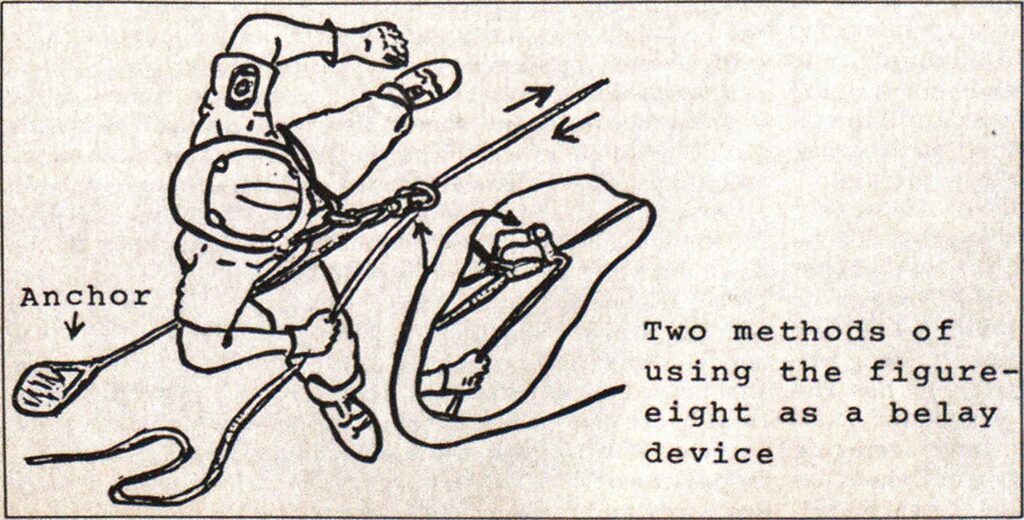
LETTERS TO THE EDITOR
Additional considerations on belaying techniques
After reading “Firefighters—The Weak Link in Belaying” by Charles L. Dean (FIRE ENGINEERING, June 1985), I am compelled to submit my comments on belaying.
Mr. Dean states that some of the firefighter deaths that result from falls can be avoided if “proper” belaying techniques are used. Though I wholeheartedly agree that belaying is paramount among the technical rescuers’ skills, I am concerned about the “basic and generally accepted technique” illustrated in Figure 1 of the article.
While Mr. Dean addresses the problems a belayer without anchor faces when trying to arrest the falling climber, he overlooks the traumatic injuries the belayer might sustain by absorbing the kinetic energy produced by the fall. Furthermore, once the belay rope has been tensioned, the belayer is powerless to extricate himself from the system and truly becomes the “weak link” in the belay chain.
The sketches on this page show the “generally accepted belaying techniques” that our team employs. The primary advantages include:
- Transferring shock loads directly to anchoring systems without injuring belayers.
- Once tensioned, the belayer can tie off the belay line, unclip his carabiner from the anchor, and aid the fallen climber.
- Also, if a rappel rack is used as a friction device, the belayer has the additional advantage of being able to increase or decrease friction in the system as the individual incident dictates.
Since diagrams from technical journals often become the handouts for drills, I felt that the ones in this article deserve some reconsideration.
Robert N. Moody
Firefighter I EMT
Wheaton Rescue Squad
and Medical Officer
Special Evacuation Tactics Team
Montgomery County, MD




Knowledge, familiarization, and inspection are keys to survival
I would like to comment on Frank Brannigan’s article “Beware the Truss” that was in FIRE ENGINEERING’S August 1985 issue. Let me just say here that these comments are my own and not those of the Firefighters Political Action Committee Inc.
The time and research that Mr. Brannigan spent on this article has shown once more to have paid off to all fire service members with information and, most of all, knowledge.
We in the fire service do or should consider truss construction as the main consideration to the stability of the building and/or roof in firefighting when we encounter a fire in the plenums of a building or in the cockloft.
The item that has me worried in the article is the use of wooden I-beams to eliminate cost in lieu of the conventional steel and/or metal truss construction.
I question the possible widespread illegal use of this type of truss by cosmetically altering the appearance of a wooden I-beam. What is stopping a contractor or developer from applying a cement coat to the beam and installing it (or trying to) in a fireproof building as a fire rated beam?
As we know, it is not uncommon to come across what I call “Uncle Willie Specials” in firefighting, something that from a distance to the common eye looks great but, in fact, is not.
Mr. Brannigan stated that “It is no longer possible to determine the construction of a building based upon what is seen at the first place opened for examination.” I concur with his statement and would take it one step further. The points on truss construction made in the article show some of the dangers to firefighters in all fire departments. One should never rely on a manufacturer’s or contractor’s claim of construction rating unless it can be substantiated and approved for its use by a nationally recognized testing lab, or approved for its use by local building codes.
In my judgement, only through knowledge, familiarization, and company and divisional inspections during the construction of buildings can we avoid getting caught in a structural collapse.
If you were told to open up the roof, the last thing that you would want to know is that you were testing a manufacturer’s claim.
Lawrence G. Meades
Executive Director
Firefighters Political Action Committee Inc. Mineola, NY

